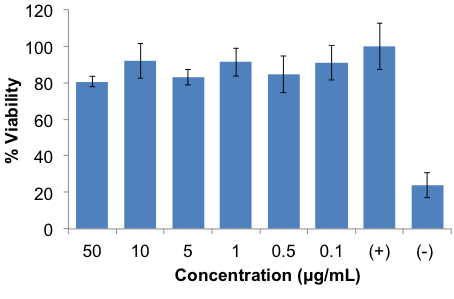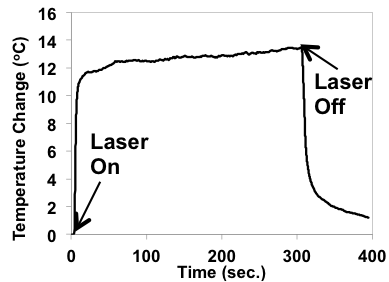Texas State University team members have developed conductive-polymer based nanostructures that can be used as probes for photothermal ablation of cancer. These agents can induce cell ablation through the conversion of photoenergy into heat, and can therefore be used for laser-induced localized anti-cancer therapy. Key agent characteristics include high absorption of light in the near infrared region, sub-200 nm size, colloidal stability, and ability to convert absorbed energy into heat. This work has been featured in local magazines and newspapers, highlighted on the local news, presented in award-winning posters, and recognized with an ACS Excellence in Graduate Polymer Research Award and a Texas State University Doctoral Research Support Fellowship.



Figure 1. (A) Structure of conductive polymer. (B) Absorption spectrum of nanostructures in suspension. (C) Transmission electron microscopy image of nanostructures. (D) Cytocompatibility of nanostructures in SKOV-3 ovarian cancer cells. (E) Photothermal response of nanostructure suspension.
